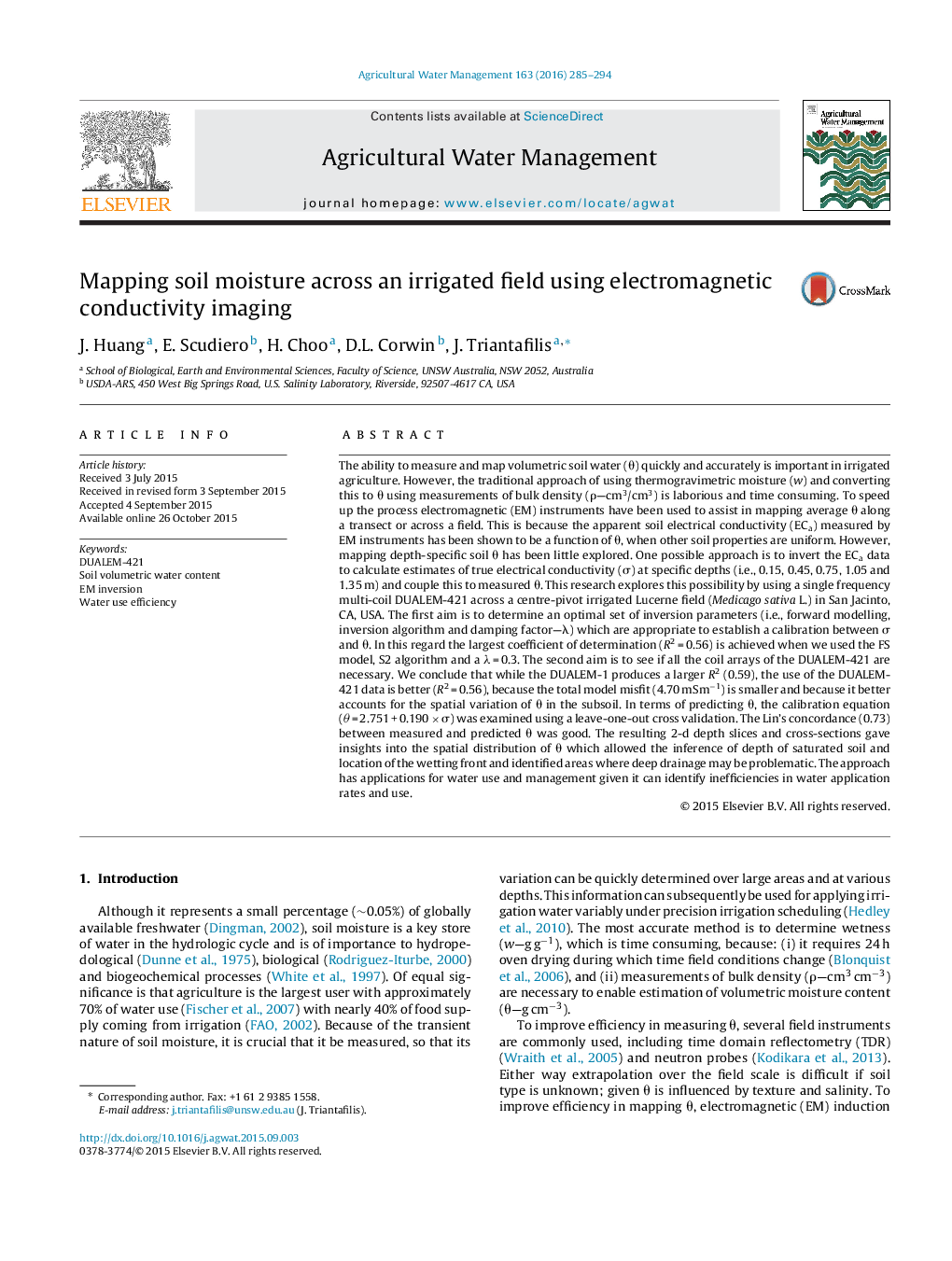| کد مقاله | کد نشریه | سال انتشار | مقاله انگلیسی | نسخه تمام متن |
|---|---|---|---|---|
| 4478358 | 1622916 | 2016 | 10 صفحه PDF | دانلود رایگان |
• Electromagnetic (EM) data can be inverted to calculate true electrical conductivity (σ–mS/m).
• A relationship between σ and θ is possible if all other factors affecting EM are relatively constant.
• Electromagnetic conductivity images (EMCI), once calibrated, can be useful in mapping volumetric soil moisture (θ—cm3/cm3).
• Calibrated EMCI are potentially useful for improving irrigation efficiencies.
The ability to measure and map volumetric soil water (θ) quickly and accurately is important in irrigated agriculture. However, the traditional approach of using thermogravimetric moisture (w) and converting this to θ using measurements of bulk density (ρ—cm3/cm3) is laborious and time consuming. To speed up the process electromagnetic (EM) instruments have been used to assist in mapping average θ along a transect or across a field. This is because the apparent soil electrical conductivity (ECa) measured by EM instruments has been shown to be a function of θ, when other soil properties are uniform. However, mapping depth-specific soil θ has been little explored. One possible approach is to invert the ECa data to calculate estimates of true electrical conductivity (σ) at specific depths (i.e., 0.15, 0.45, 0.75, 1.05 and 1.35 m) and couple this to measured θ. This research explores this possibility by using a single frequency multi-coil DUALEM-421 across a centre-pivot irrigated Lucerne field (Medicago sativa L.) in San Jacinto, CA, USA. The first aim is to determine an optimal set of inversion parameters (i.e., forward modelling, inversion algorithm and damping factor—λ) which are appropriate to establish a calibration between σ and θ. In this regard the largest coefficient of determination (R2 = 0.56) is achieved when we used the FS model, S2 algorithm and a λ = 0.3. The second aim is to see if all the coil arrays of the DUALEM-421 are necessary. We conclude that while the DUALEM-1 produces a larger R2 (0.59), the use of the DUALEM-421 data is better (R2 = 0.56), because the total model misfit (4.70 mSm−1) is smaller and because it better accounts for the spatial variation of θ in the subsoil. In terms of predicting θ, the calibration equation (θ = 2.751 + 0.190 × σ) was examined using a leave-one-out cross validation. The Lin’s concordance (0.73) between measured and predicted θ was good. The resulting 2-d depth slices and cross-sections gave insights into the spatial distribution of θ which allowed the inference of depth of saturated soil and location of the wetting front and identified areas where deep drainage may be problematic. The approach has applications for water use and management given it can identify inefficiencies in water application rates and use.
Journal: Agricultural Water Management - Volume 163, 1 January 2016, Pages 285–294
